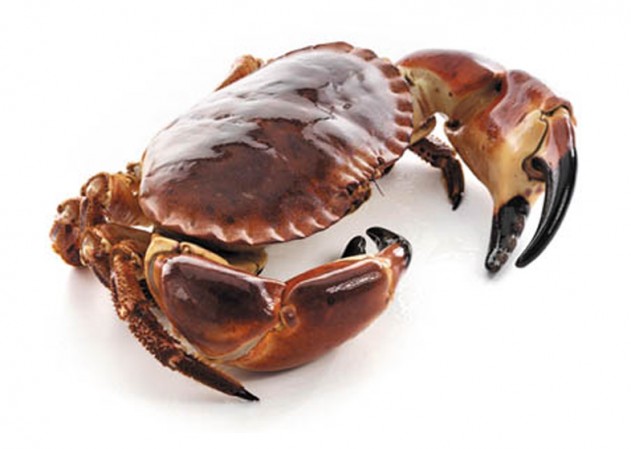Biology
The brown crab is the heaviest Irish crab and easily identified by a characteristic ‘pie-crust’ edge to the carapace. They are found in waters down to 100m. Brown crabs are highly fecund and spawn mainly in the winter months. They can grow up to about 25cm carapace width, with the larger specimens inhabiting deeper water. The crab is encased in a hard, rigid shell, which, like other crustaceans, has to be shed at intervals to permit growth. Moulting takes place at frequent intervals during the first years of a crab’s life, but only every two years after it is grown and this is mirrored by a slowing of growth rate. Juvenile crabs settle in the intertidal zone and remain in these habitats for 3 years, until they reach 6-7cm carapace width, at which time they migrate to subtidal habitats. Edible crabs can live for up to 100 years but the average is around 25-30 years, and sexual maturity is reached after approximately 10 years.
Stock Information
Brown crab is widely distributed in coastal waters of the Mediterranean, Atlantic, English Channel and North Sea. ICES have separated the crab population into stock management units (SMUs) and although no advice is offered, estimations of the stock are made. In the southern North Sea SMU landings per unit effort (LPUE) have been declining since 2003, suggesting a reduction in the edible crab stock in this area. Management measures for stocks may be at the EU / national or regional / local level, e.g. in coastal waters out to 6 miles, potting is regulated by a number of Sea Fishery Committees’ (SFC) byelaws. In this region there is protection of berried females and soft-shelled crabs, a ban on using edible crabs as bait, a ban on the landing of claws and gear restrictions.
Capture Information
Pots are a highly selective method of fishing. Undersized animals can be returned to the sea alive. However many pots in use now, known as parlour pots, combined with mechanical hauling and increasing numbers of pots, have contributed to the potential unsustainability of the fishery in many areas. The legal minimum landing size for brown crab in European waters ranges from 14cm (north of 56 degrees North) to 11.5cm (Eastern Sea Fisheries District) depending on area of capture. Turtles may, but rarely, become entangled in ropes used to buoy pots.

